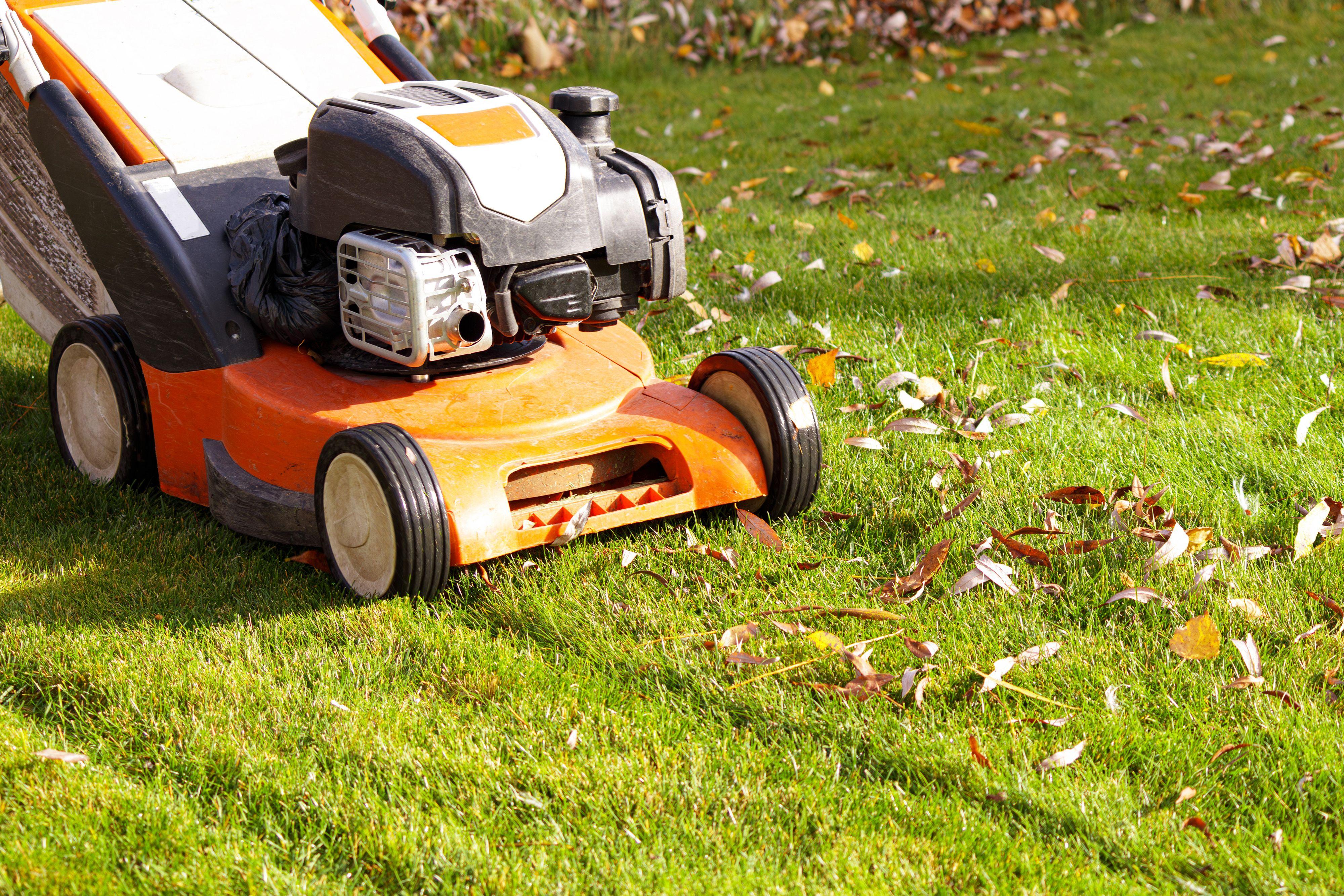Key Takeaways
- Continue mowing while grass is growing, cutting only one-third of its height each time.
- For cool-season grass, mow until growth stops, ending at 3–4 inches tall.
- Raise mower height for warm-season grass in fall and mow if needed for weed control.
Smart fall mowing sets the stage for a healthy lawn in spring. Let your grass grow too tall before winter, and voles, moles, and other rodents may move in. Cut it too short, and the lawn is more vulnerable to winter damage. In short, both timely mowing and mower height matter in fall lawn care. Whether your lawn goes dormant or simply slows its growth, these late-fall mowing strategies can help ensure a lush, green lawn come spring.
Mow While Grass Is Growing
Simply put, if your lawn is growing, keep mowing. Grass continues to thrive well into fall, even after other perennials and annuals have gone dormant or been hit by frost. So, while you might be tempted to store the mower after dealing with seasonal tasks like composting annuals and harvesting your garden, remember to keep mowing your grass as needed.
Follow the One-Third Rule
Instead of relying solely on the time of year, use your lawn's height to decide when to mow. Aim to never cut off more than one-third of the grass blade—this is known as the "one-third rule."
For example, if your mower is set to 3 inches, mow the grass before it reaches 4.5 inches. This practice supports your lawn's health by promoting strong roots and minimizing thatch buildup.
Once your grass no longer reaches the optimal height for mowing, it has stopped growing. Remember, the ideal mowing height depends on your grass type. So, check here for specifics on your type of grass.
Sachko / Getty Images
Mowing Cool-Season Grass
If your winters are snowy, your grass is likely a cool-season variety, such as Kentucky bluegrass, fine fescue, or perennial ryegrass. These grasses flourish in cool temperatures during spring and fall. While they may turn brown and go dormant in summer, they tend to revive in fall with adequate moisture and cool weather.
As autumn air cools, soil often stays warm enough to encourage growth in cool-season grasses. Provided there is regular rain and warm soil, these grasses grow quickly and need frequent mowing.
Continue mowing your cool-season grass until it stops growing, ensuring the final cut of the season leaves the lawn about 3 to 4 inches tall. It's better to have the grass a bit shorter rather than too long. Longer grass in spring is more prone to disease as it stays wet longer, creating a perfect environment for problems.
Related
Mowing Warm-Season Grass
Warm-season grasses like bermudagrass, St. Augustine grass, zoysiagrass, and centipede grass notably reduce their growth in late fall. So, as growth slows, you'll need to mow less often. To help these grasses adapt to cooler growing conditions, raise your mower deck by about a half-inch. For example, if your lawn was maintained at 2 inches, adjust it to 2.5 inches in late fall. This additional height helps leaves capture more sunlight.
In late fall and winter, mowing warm-season grasses often focuses on weed control rather than grass cutting. Weeds like burweed, annual bluegrass, and chickweed thrive when these grasses are either dormant or growing slowly. While applying pre-emergent herbicides in September or October is the best defense against these weeds, mowing in late fall and winter can help manage any that appear after the herbicide window.
What to Do About Leaves
You can remove leaves with a leaf vacuum or put them to work. Leaves are nutrient-rich and can boost soil health, helping your lawn thrive. Simply rake fallen leaves from landscape beds into piles and mow over them on your lawn, chopping them into small pieces by passing over them several times. The small leaf pieces will integrate into the turf and break down swiftly.
Mow leaves when they’re dry so they chop easily and don’t clump, and raise your mower deck slightly to handle thicker layers.
Leave the Clippings
Regardless of whether you're mowing in spring, summer, or late fall, leave the clippings on your lawn. These clippings decompose rapidly, enhancing soil quality and providing nutrients for your turf grass. Consider them as free fertilizer for your lawn.



